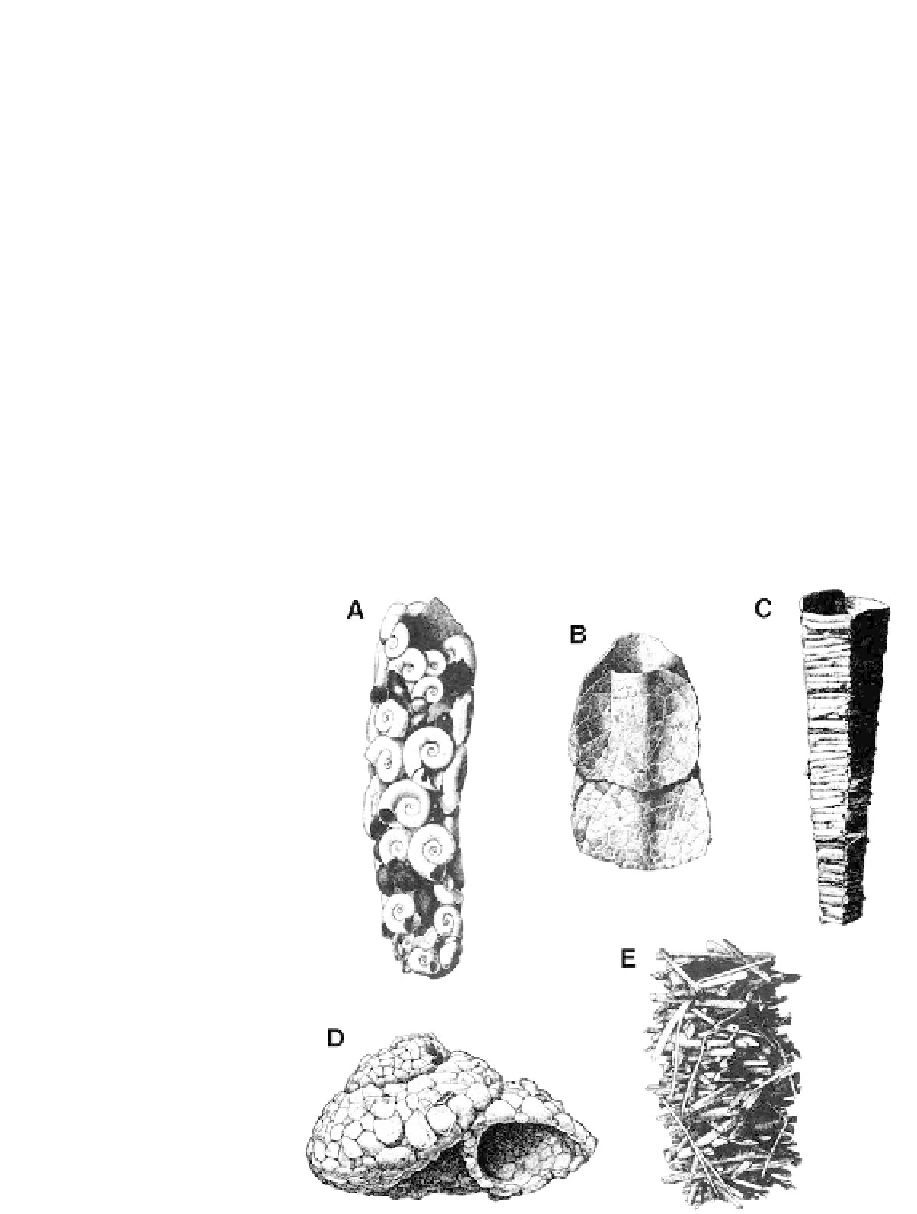Environmental Engineering Reference
In-Depth Information
and seize moving prey. Larvae have large compound eyes and short anten-
nae (Fig. 9.9H) and move about the substrate by crawling; some stalk their
prey. Adults are able to fly at 25-35 km per hour, are significant predators
of mosquitoes, and are viewed as beneficial insects.
The Plecoptoptera (stoneflies) larvae are important in streams as food
for fish. Some species are predators of other invertebrates and others are
important leaf shredders. They are associated primarily with pollution-free,
cool, highly oxygenated running waters. This preference for clean habitats
has led to their use in biotic indices for stream water quality. The larvae
generally are distinguished from other aquatic larvae by the two long cerci
(appendages) on their posterior end and their elongate, flattened bodies
(Fig. 9.8I).
Caddisflies (Trichoptera; Figs. 9.1 and 9.9B) are best known for their
cases (Fig. 9.10), retreats, and nets that they construct using silk and ma-
terials from the environment. Some species are free living, highly mobile,
and lack cases or nets. Most species occur in running waters, but some oc-
cur in lakes and wetlands. Along with the mayflies and stoneflies, a diverse
caddisfly community indicates a clean stream or river. The free-living cad-
disflies are mostly predators, those that build cases are primarily herbivores
on periphyton or eat leaves, and the species that spin nets are filter feed-
FIGURE 9.10
Caddis larvae cases illustrating diversity of materials used and form of con-
struction, all about 1 cm long: (A)
Philarctus,
(B)
Clostoeca,
(C)
Brachycentrus,
(D)
Heli-
copsyche,
and (E)
Platycentropus
(reproduced with permission from Wiggins, 1995).

Search WWH ::

Custom Search